The Abegg-Stiftung, Riggisberg, welcomes visitors from late April to early November
This year the Abegg-Stiftung, in Riggisberg, Switzerland opens its doors to the public from 27th April to 9th November 2014. In addition to a new special exhibition called ‘Veil and Adornment. Medieval Textiles and the Cult of Relics’ the permanent exhibition, newly interpreted some two and a half years ago, is always worth travelling to see.
The permanent exhibition shows all the highlights of the Abegg-Stiftung’s world-class collection, including several recent acquisitions which are on show for the first time. The focal point of the display is the collection of sumptuous textiles from Europe, the eastern Mediterranean and regions along the Silk Road. Arranged in chronological order from the 4th century BC to the 18th century A.D., the pieces illustrate the development of textile art in both East and West. Paintings, sculptures and important works of applied art are also on display and shed light on the interrelationships between textiles and other arts.

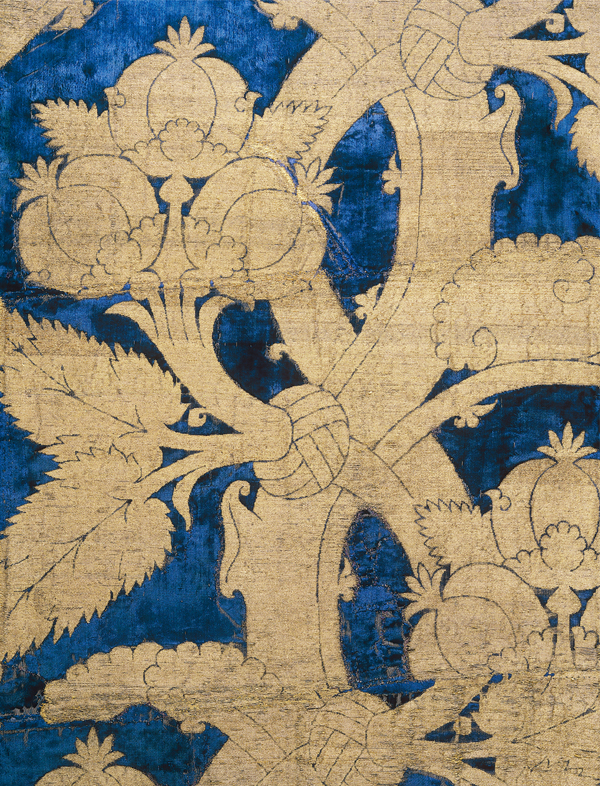
Blue velvet with pomegranate pattern brocaded in gold threads, Italy, 15th century
©Abegg-Stiftung, CH-3132 Riggisberg (photo: Christoph von Viràg)
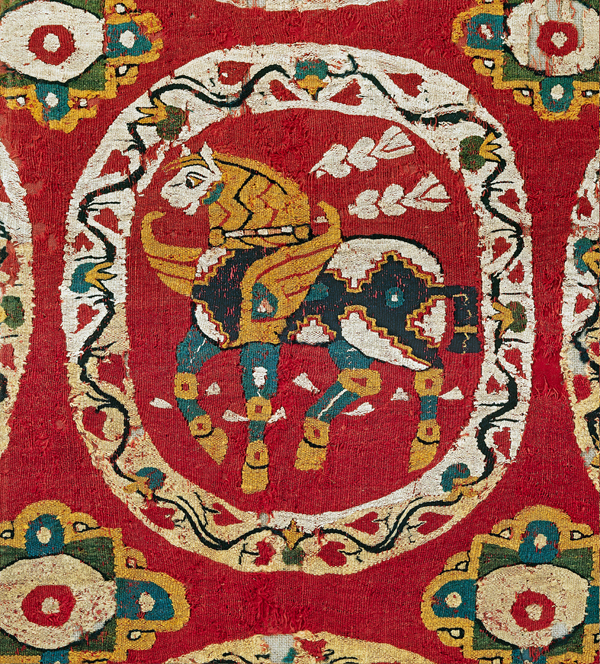
Hanging with winged horses in medallions (detail), Egypt, 4th–6th century
©Abegg-Stiftung, CH-3132 Riggisberg (photo: Christoph von Viràg)
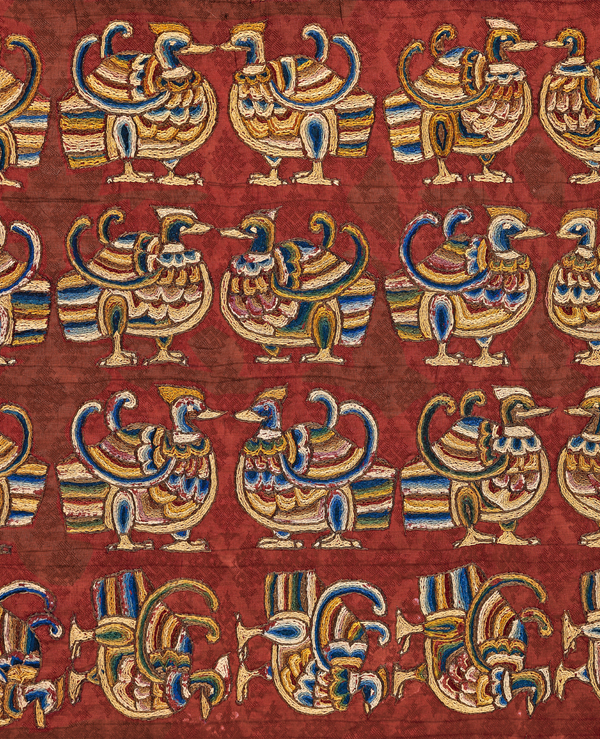
Silk damask with embroidered ducks, Central Asia, 7th–8th century
Textiles from the regions along the Silk Road play an important role in the newly furnished permanent exhibition. This red silk was woven in China and embroidered in Central Asia with stylised duck motifs that may be traced back to Persian prototypes, thus documenting the exchange of goods and motifs between east and west.
©Abegg-Stiftung, CH-3132 Riggisberg (photo: Christoph von Viràg)
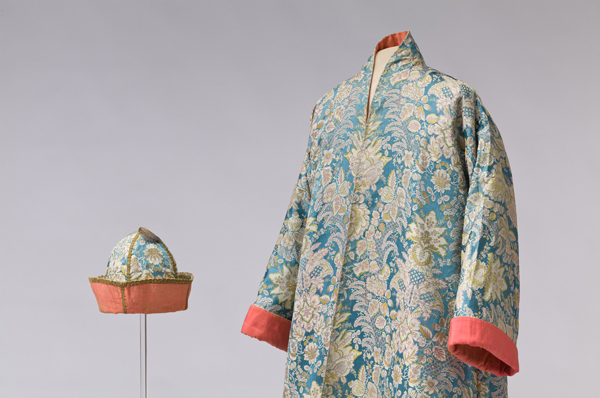
Male silk banyan with matching cap, Italy, 1720–1730
©Abegg-Stiftung, CH-3132 Riggisberg (photo: Christoph von Viràg)
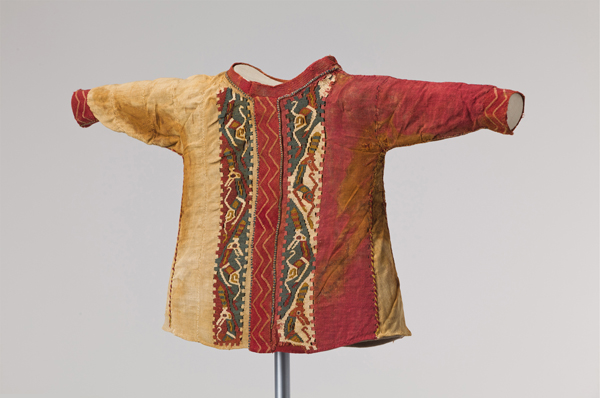
Woollen child’s shirt, Eastern Central Asia, 4th–2nd century BCE
©Abegg-Stiftung, CH-3132 Riggisberg (photo: Christoph von Viràg)
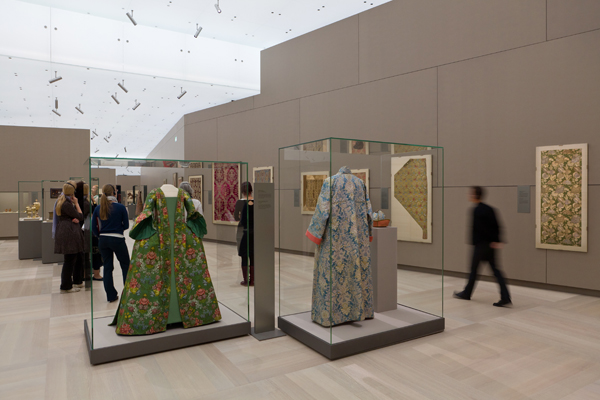
Section with textiles from Europe, Persia and the Ottoman Empire, 16th to 18th century
©Abegg-Stiftung, CH-3132 Riggisberg (photo: Christoph von Viràg)
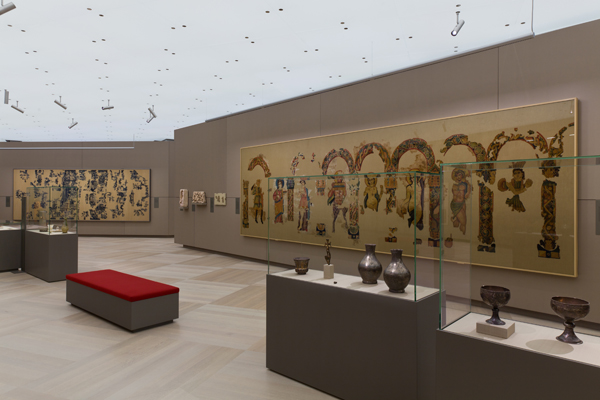
Section with objects the Mediterranean Region, Late Antiquity, 4th to 7th century
The Dionysos hanging is a 7-metre-long tapestry, with Dionysos and his entourage portrayed beneath arcades adorned with floral ornamentation and braided patterns.
©Abegg-Stiftung, CH-3132 Riggisberg (photo: Christoph von Viràg)
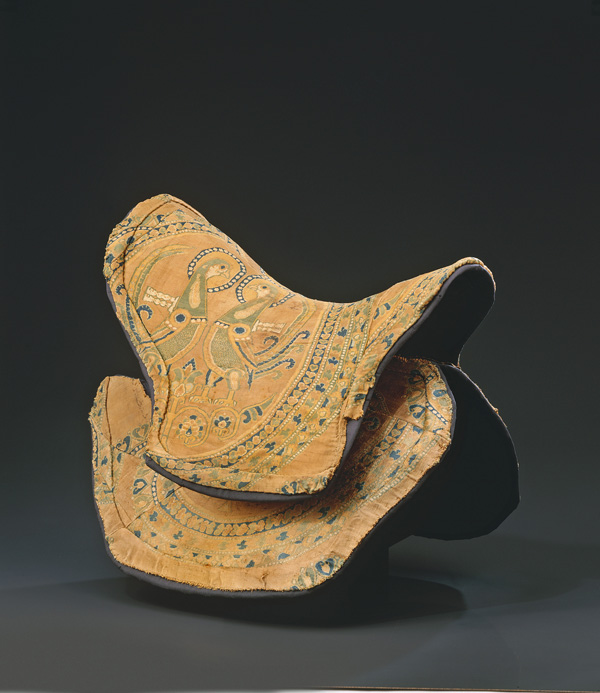
Saddle cover, Central Asia, late 8th–mid-9th century
©Abegg-Stiftung, CH-3132 Riggisberg (photo: Christoph von Viràg)
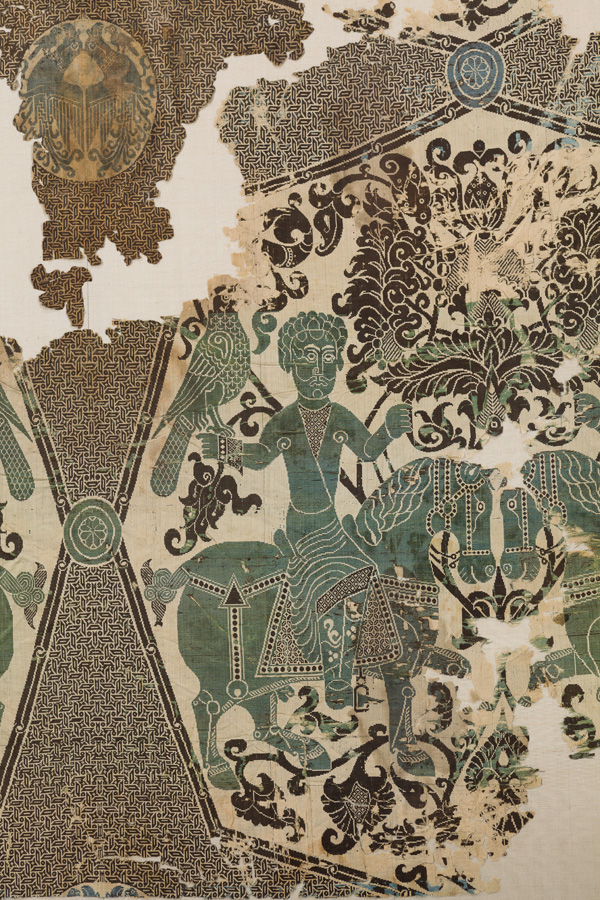
Silk with falconers, Iran, 11th century
Silk (double-weave lance silk)
©Abegg-Stiftung, CH-3132 Riggisberg (photo: Christoph von Viràg)
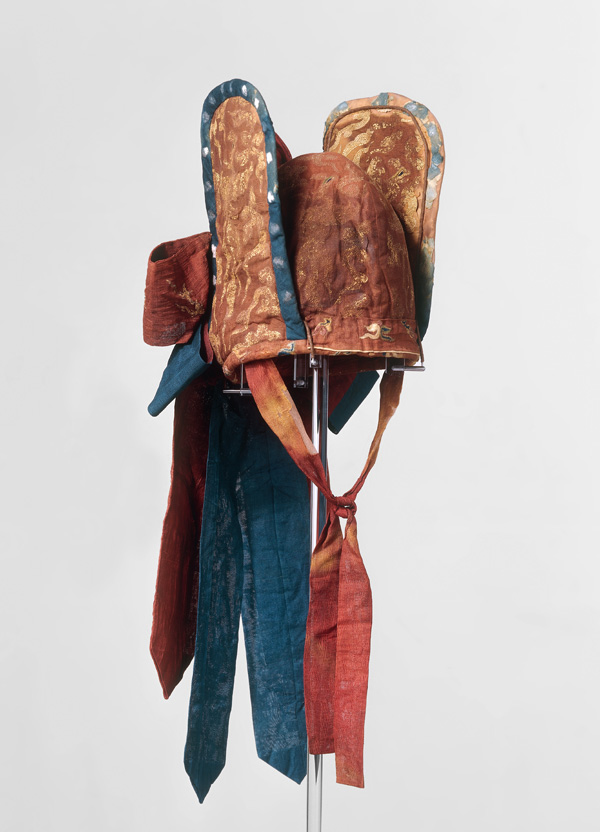
Headdress, Northern China, Liao Dynasty, 1st half of the 11th century
Silk gauze, embroidered with strips of gilt paper and silk
©Abegg-Stiftung, CH-3132 Riggisberg (photo: Christoph von Viràg)
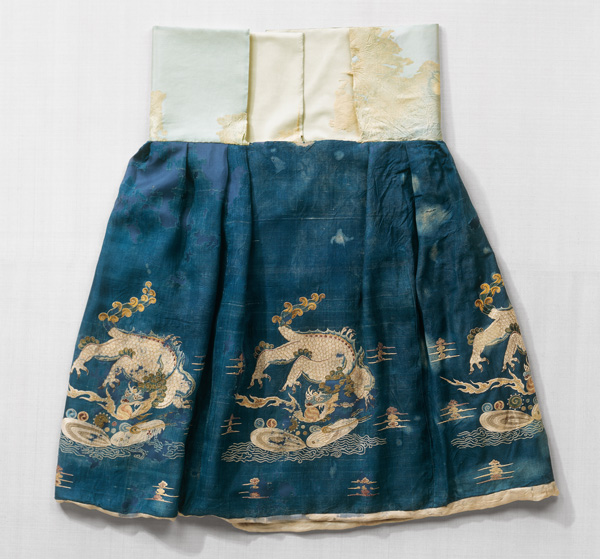
Blue silk skirt embroidered with dragons
Northern China, Liao Dynasty, 1st half of the 11th century
©Abegg-Stiftung, CH-3132 Riggisberg (photo: Christoph von Viràg)
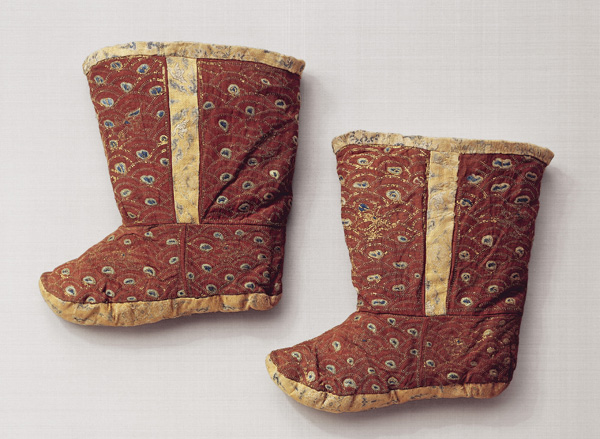
Pair of boots, Northern China, Liao Dynasty, 1st half of the 11th century
Silk gauze, embroidered with strips of gilt paper and silk; silk
The elite of the Liao Dynasty clad itself in silk from head to foot, both in life and in death. This pair of silk boots is a well-preserved example testifying to the significance of textile art in the nobility of the Liao Dynasty.
©Abegg-Stiftung, CH-3132 Riggisberg (photo: Christoph von Viràg)













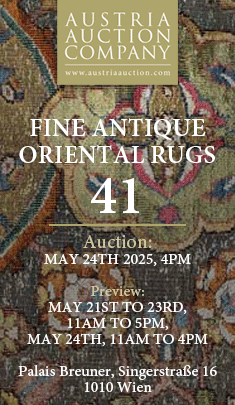

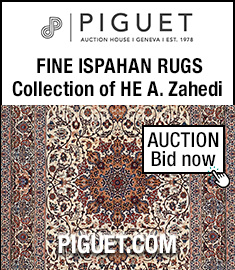

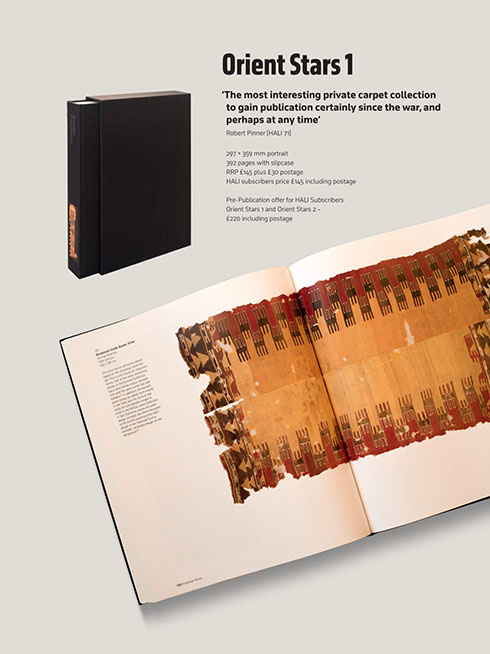
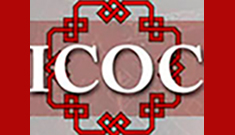
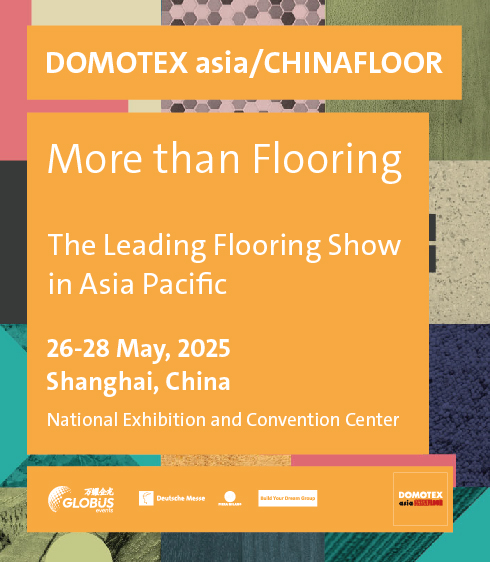
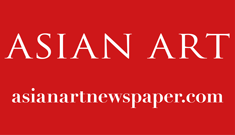
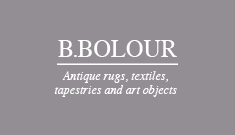
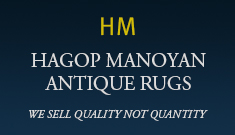
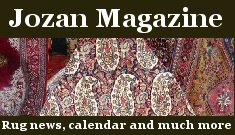
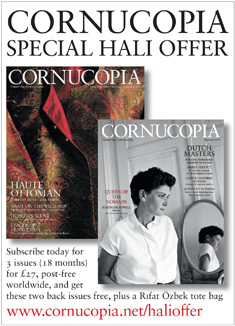

Comments [0] Sign in to comment